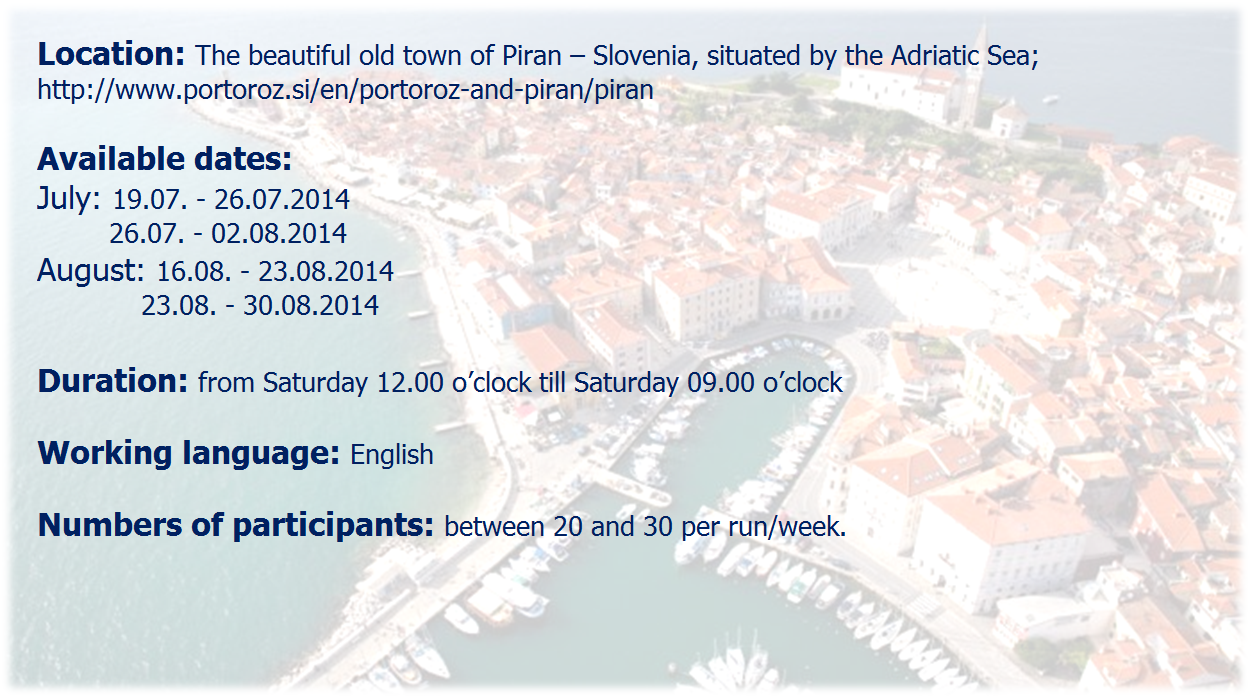The earliest reliable records of the area are in the 7th century work Cosmographia by an anonymous cleric of Ravenna. The name of the town most probably originates from the Greek "pyrranos", which means "red", because of the reddish flysch stones commonly found in the town's area.
In the pre-Roman era, the hills in the Piran area were inhabited by Illyrian Histri tribes who were farmers, hunters and fishermen. They were also pirates who disrupted Roman trade in the north Adriatic Sea.
By 952, Piran had become a part of the Holy Roman Empire. By the 7th century, under Byzantine rule, Piran had become heavily fortified.
The Piran town walls were constructed to protect the town from Ottoman incursions; many parts of the town walls from different eras remain.
In the second half of the 19th century, the leaders of the Pirano municipality and local doctors decided to stimulate tourism in the region, by offering health treatment by concentrated salt water and salina mud, in Porto Rose and from 1879 onwards dr. Giovanni Lugnano first offerer of such treatment to various visitors. In 1890 in Porto Rose the predecessor of the famous Hotel Palace was built. At the initial opening ceremony in 1910 the Hotel Palace was already named "the most beautiful hotel on the Adriatic coast". The hotel was equipped with most modern therapeutic accessories, and for the needs of high importance guests a casino was built.
Hotel Palace
Hotel Palace
In 1908 dr. Orazio Pupini, a prominent Austrian doctor with a noticeable treatment history opened a sanatorium. He was also the main doctor of the Austrian Railways, and a member of the Austrian doctor's Association.
At the end of the 19th century and the beginning of the 20th century, Piran was an Austro-Hungarian city with over 12,000 inhabitants, larger than the nearby Koper. It was a flourishing market and spa town with good transport connections. The first trolleybus line in the Balkans was introduced to public service on 24 October 1909 in Piran. In 1912, it was replaced by a tram that operated on the same route till 1953.
Piran trolleybus
The first record of the Piran salt-pans goes back to year 804. The Placitum of Risano relative to the discussion by delegates of Karl the Great at Risano/Rižana about the Pag salt-pans. At that time, there were several small salt-pans in Piran owned by monasteries. In the 1814 The Austro-Hungarian monarchy proclaims salt a state monopoly.
Harvesting the salt
Piran salt-pans
TODAY...
Piran is a town in the Municipality of Piran in southwestern Slovenia on the Gulf of Piran on the Adriatic Sea. It is one of the three major towns of Slovenian Istria. The town has much medieval architecture, with narrow streets and compact houses. Piran is the administrative centre of the local area and one of Slovenia's major tourist attractions. Until the mid-twentieth-century Italian was the dominant language, but was replaced by Slovene as populations moved.
Piran is the birthplace of composer and violinist Giuseppe Tartini, who played an important role in shaping its cultural heritage. The town's main square, Tartini Square is named after him.
Trtini square
Piran
Piran
Franciscan monastery in Piran is a Roman Catholic monastery located on the hill above Piran, a port town on the coast of the Adriatic Sea in southwestern Slovenia. In Greyfriars Franciscan monastery's atrium, one of the most beautiful cloister atriums in the Slovenian Littoral, which has a very good acoustics, Musical Evenings of Piran have taken place for decades.
Greyfriars Franciscan monastery atrium
Portorož is an urban coastal settlement in the Municipality of Piran in the southwestern Slovenia. It is one of the country's largest tourist areas.
Portorose by night
Portorose beach
Palace hotel today
from Bernardin to Piran
Bernardin
Bernardin
The Piran Salt Pans are among those rare salt pans in the world where salt is produced using centuries-old processes, involving entirely natural crystallisation, working by hand and employing tools and procedures used by our ancestors. Piran salt is produced according to an approved traditional procedure. Salt from Piran salt-works is produced according to an almost 700-year-old tradition and only with traditional tools. The basic process is natural crystallisation on salt-fields, where salt is collected on a bio-sediment base of a few millimetres thickness called Petola, composed of minerals and micro-organisms.
Piran salt-pans today
Piran salt-pans today
Salt Spa
SEE YOU IN PIRAN SUMMER SCHOOL!











_2.JPG)
























